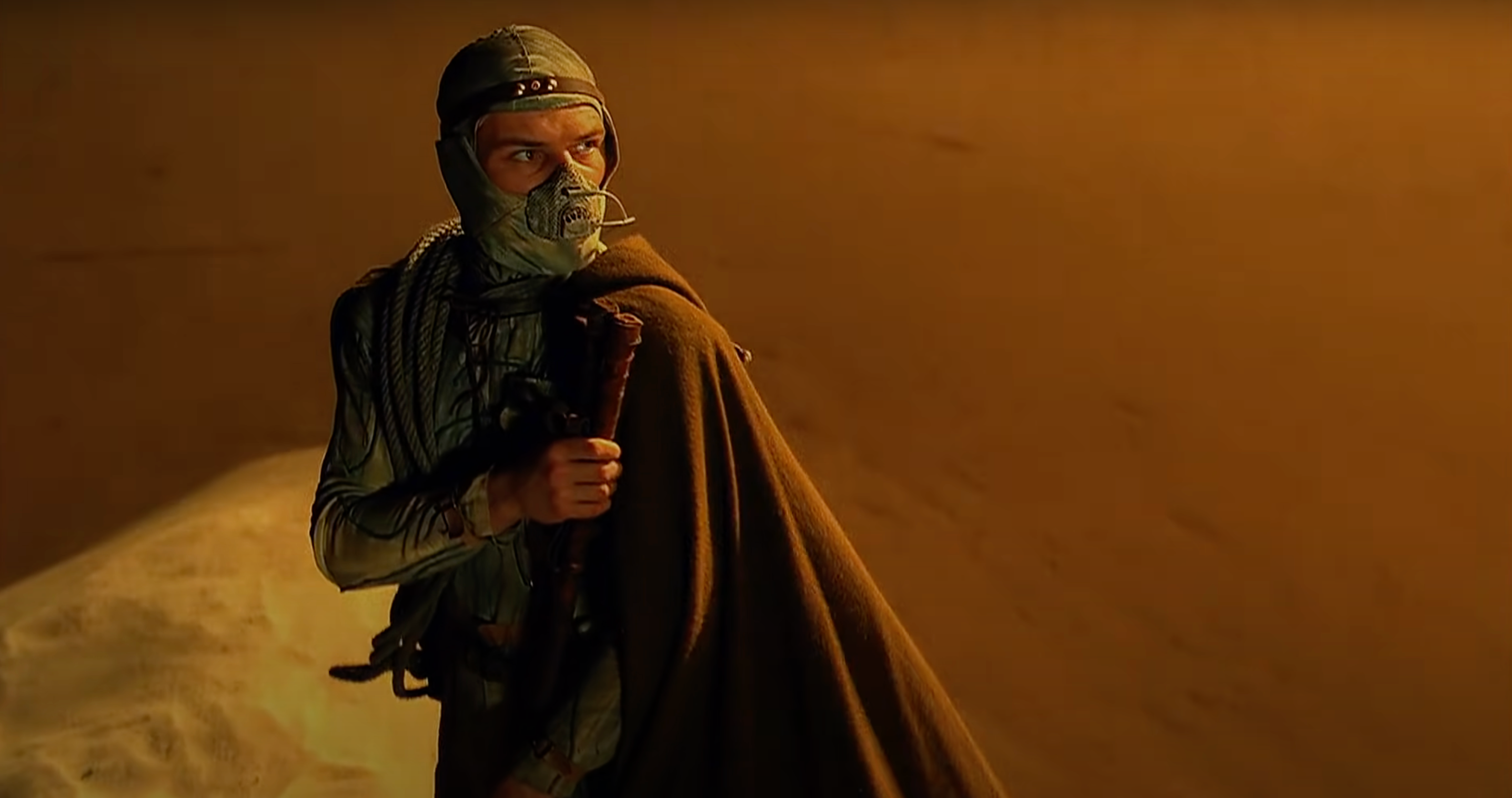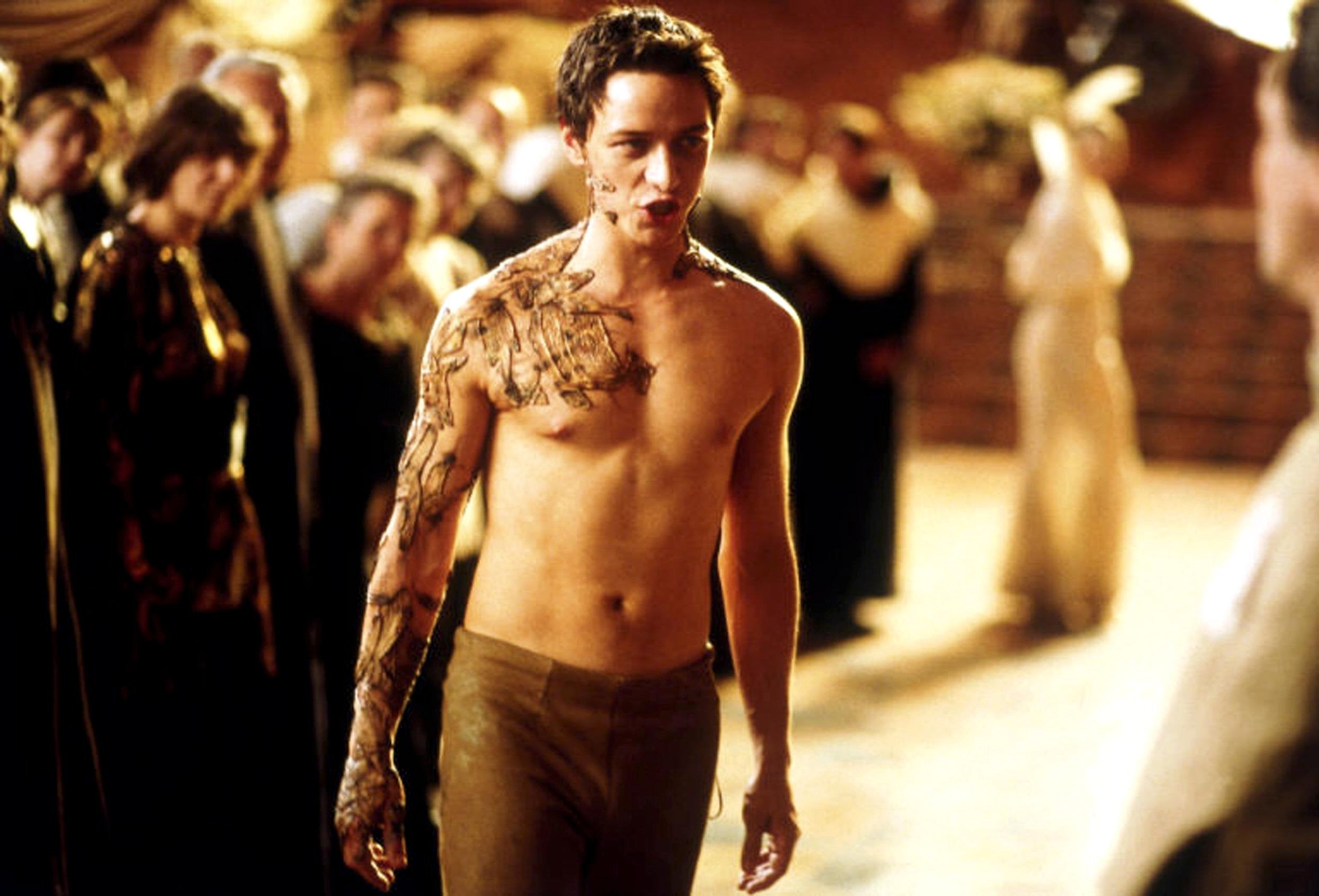A cult of superpowered women using genetic coding to take over the universe. A war between humanity and technology. Gigantic god-like sandworms. Dune: Prophecy doesn’t exactly scream cosy Monday evening viewing, but such is the nature of Dune, a sci-fi franchise that is notoriously impenetrable and difficult to adapt both on the big screen and on television.
Prophecy, airing on Sky Atlantic and NOW, is a prequel series based on the 2012 novel Sisterhood of Dune by Kevin J Anderson and Brian Herbert, the son of Dune creator Frank Herbert. Like the behemoth Denis Villeneuve movies led by Timothée Chalamet, the new series brings together a starry cast, including Emily Watson, Olivia Williams and Mark Strong, and a production value that rivals the films. It tells the origin story of the Bene Gessirit, a collective of women who, through biological tampering, attempt to manipulate and control power in the universe throughout millennia.
Prophecy is the first Dune television show attempted since the early Noughties when two miniseries were made for SyFy (formerly the Sci-Fi channel). Curiously titled Frank Herbert’s Dune (2001) and Frank Herbert’s Children of Dune (2003) – a production decision out of respect for the author – these were essentially six feature-length episodes that faithfully followed the Dune story, specifically Paul Atreides’s arc from a naive teenager to a ruthless resistance leader and finally a blind preacher.
“They [SyFy] were trying to reinvent themselves as a serious product, not just a purveyor of old movies of relatively low-budget sci-fi. They wanted to step up and join the big leagues,” says John Harrison, who wrote both shows and directed the first.
If the only point of reference for Dune is Villeneuve’s stylish epics, shot on location in Jordan, UAE and Norway, then these miniseries will be a baffling thing to behold at face value. Imagine colourful period outfits that look like they’ve been taken from the last performance at the Globe, clashing with sets that might have been impressive 20 years ago but now look somewhere between a cheap nightclub and a shopping centre.
That might sound like a snobbish review of a strange, low-budget show but watching it back all these years later, I find it impossible not to be won over by it. If you are willing to immerse yourself in the world and go along for the ride there is so much to enjoy. Desert setting Arrakis feels alive and brimming with activity (a quality that Villenueve’s films arguably lack), the violence is far more visceral than what the movie versions have produced and there are so many weird and wonderful performances to appreciate; from the camp eccentricity of Ian McNeice as the vile Baron Harkonnen to the mysterious Karel Dobrý as Dr Liet-Kynes.

Both series were made on a $20m (£15m) budget – pretty small when you consider that, these days, a show like House of the Dragon spends that on one episode. They were shot almost entirely on green screen and on a sound stage in the Barrandov Studios in the Czech Republic, which Harrison admits he was initially against but was talked around to, after seeing what was possible with the technology at the time.
Aesthetically, the miniseries doesn’t hold up to what is possible these days. We can try to immerse ourselves in the harsh lands of Arrakis but it’s hard to get beyond the fact that we are often looking at two actors pretending to run away from a moderately priced CGI sandworm. Nevertheless, the visuals were groundbreaking for a TV show at the time, and both series won Emmys for special effects.
“I wish I’d had the advances in technology to enhance some of the special effects that we did,” admits Harrison. Though he does say he’s “pretty proud” of what visual effects supervisor Ernie Farino and his team pulled off – “ quite a stunning achievement with the resources that were available”.
These miniseries have perhaps been unfairly forgotten about in the sands of time
What the first series did have was an impressive cast and crew. Joining Harrison behind the camera were a pair of Oscar winners, cinematographer Vittorio Storaro and costume designer Theodor Pištěk. In front of it were stars William Hurt, Saskia Reeves and young Scottish actor Alec Newman as Paul Atreides.
“The responsibility of playing such an iconic character could have been overwhelming, but it never occurred to me,” says Newman, who calls Paul’s journey “one of the greatest character arcs ever written”. “I’d done a fair bit of classical work, so it was easy to tune in to John’s pseudo-Shakespearean vision for Dune. We talked a lot about the character’s progression from prince to messiah-like leader, and thinking in terms of classical story elements and mythology was helpful. Yet it struck me early in the process that one man’s freedom fighter is usually another man’s terrorist.”
At this point, the only adaptation of the first novel had been David Lynch’s derided effort from 1984, which even the director himself has since disowned. That film vastly strays from the book and Paul’s overall narrative completely. Making a more faithful adaptation, which many have praised Villeneuve’s most recent efforts for, was something that Harrison was conscious of.
“Nobody came to me and said, ‘The adaptation must be like this,’” says the director. “I made it very clear from the beginning that’s what I wanted to do because I love the books. And I love the mythology of them. I love the politics of them.”

Anyone who has read the first novel will be familiar with just how dense and sprawling it is. Yet even for a miniseries that totals four and a half hours, parts still needed to be cut, such as the character Thufir Hawat becoming a pawn for the wicked Harkonnens. “I decided that was a diversion we really can’t afford. We can’t afford the screen time to service that,” says Harrison. “I had to be as close as I could to the story that Frank created and still create a straight-line narrative.”
Dune became a major success for SyFy and was watched by an average of 4.4 million households over the three nights it aired, and subsequently became a hit overseas, too. Three years later saw the arrival of the sequel Children of Dune, directed by Greg Yaitanes. To date, this is the only live-action version of any of Herbert’s sequel books, of which there are five. Villeneuve is reportedly planning to adapt the second novel Dune Messiah for his next film.
In 2003, Harrison incorporated both Dune Messiah and the third novel Children of Dune into the second miniseries, which bolstered even more star power in the form of James McAvoy as Paul’s son Leto Atreides II, who by the end of the series has accepted his fate that he needs to transform into a sandworm in order to unite the universe (a premise that even Harrison admits is a “little bizarre”). Elsewhere, Susan Sarandon, who is reportedly a fan of the books, plays the corrupt Princess Wensicia Corrino, who attempts to assassinate Paul using a cloned version of his deceased friend Duncan Idaho.
To say that the sequel novels go to places that the original didn’t dare to is an understatement, but by covering this section of the books, the miniseries was able to round out Paul’s story. No longer is he the charismatic “Lisan al-Gaib” messiah, but instead a withered and disillusioned soul, returning from his years in the desert with a voice that has been “ravaged by the sands”, as Newman puts it.
“I felt like I knew who Paul was – if that’s not trite,” says Newman. “In many ways, there’s more humanity in Children of Dune. There is struggle and loss, and we were able to bring the great love between Paul and his partner, Chani, to its painful conclusion.”
These miniseries have perhaps been unfairly forgotten about in the sands of time. More flashy and expensive sci-fi films and series have come and gone, from Battlestar Galactica to Andor, eclipsing what these shows managed to achieve, often against the odds.
Unable to film on location, without the budget of a Hollywood blockbuster, and working with an already outlandish text, the shows still manage to convey a sense of warmth and appreciation for the surreal source material. Dune and Children of Dune are a fascinating microcosm of TV before it entered the current prestige era, where razzmatazz can often overshadow more engrossing and entertaining narratives.
Harrison was told at the time that it’s “not a book that can be adapted. It’s too dense. It’s too thick, too many characters. Too much politics. Not enough, you know, space opera. It’s not Star Wars. And so it’s not gonna work.” He smiles. “I think we proved otherwise.”
‘Dune: Prophecy’ is available on NOW and Sky Atlantic in the UK
‘Frank Herbert’s Dune’ and ‘Frank Herbert’s Children of Dune’ are both available to watch on Amazon Prime







